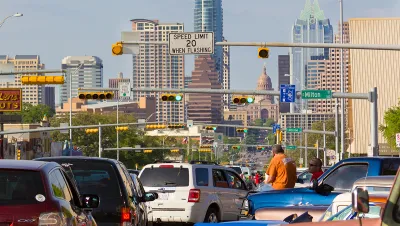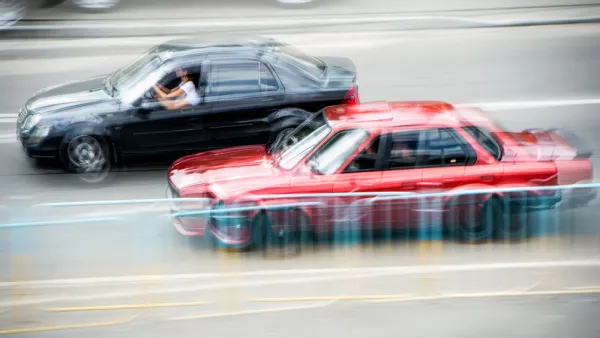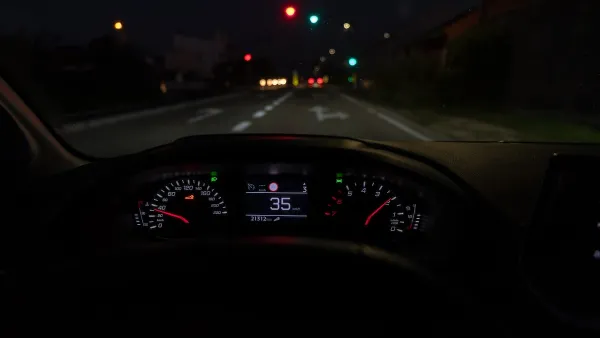Chia-Yuan Yu and Minjie Xu guest blog about a recent article in the Journal of Planning Education and Research.

Guest Bloggers: Chia-Yuan Yu of the University of Central Florida and Minjie Xu of Texas A&M University
Transportation planning increasingly promotes non-motorized travel in order to reduce automobile dependence. However if planners don’t provide safe environments for new pedestrians and cyclists, they expose them to dangerous situations. Promoting safety is therefore a critical issue. In particular, the built environments that planners create are an important determinant of traffic safety. Since crashes are often unevenly spatially distributed within a region, the relationship between built environments and crashes may vary by each area’s particular characteristics. Understanding this relationship is crucial to providing direction for improving traffic safety in different built environments, especially for governments with limited financial and other resources.
In our recent paper in the Journal of Planning Education and Research we use Austin, Texas to explore how the built environment correlates with collisions that result in three different injury severities: fatal, injury, and no–injury. Our local models (geographically weighted negative binomial regressions) considered the influence of various dimensions of built environments—density, diversity, design, and regional accessibility—and explored the potential interaction effects among land uses and road types on traffic safety. While controlling for volume, we found that areas with high traffic volumes consistently had a higher number of total, fatal, injury, and no-injury crashes. High-speed and high-volume facilities (e.g., highways/freeways and arterial roads) were associated with more total and fatal crashes and the influence was stronger in downtown areas than in peripheral areas. Areas with a higher percentage of commercial areas experienced more total and injury crashes, especially in downtown areas.
Based on the result, three strategies should be considered for planners and policymakers to improve traffic safety.
- Mode shift, especially in downtown locations: Because downtown areas, with their higher traffic volume, were associated with an increased number of crashes, it is necessary to find ways of strategically shift automobile travel demand to other travel modes to downtown locations. Programs such as Commute Trip Reduction (CTR) programs, Travel Demand Management (TDM), and Commuter financial incentives would be feasible approaches.
- Retrofit high-speed and high-volume roads: Retrofitting high-speed and high-volume roads to encourage lower traffic speeds may provide safety benefits. Complete Streets programs that retrofit downtown thoroughfares for diverse users and activities would be a possible option. It is important to design trip-attracting land uses into the other way to lower vehicle trip generations.
- Design land areas that generate fewer lower vehicle trips: Car–free planning involves designing particular areas to accommodate minimal automobile use. Commercial centers and districts that feature a concentration of businesses and convenient accessibility are an alternative to automobile-oriented suburban strip designs. People in these districts travel shorter distances and use alternative transportation modes, thus reducing the total number of automobile trips.
Such efforts aimed at reducing automobile travel through programs and retrofitting require partnerships among multi–level agencies and stakeholders, such as transportation planners and engineers, neighborhood and business associations, real estate developers, and local governments.
Open Access Until September 8th, 2017

Analysis: Cybertruck Fatality Rate Far Exceeds That of Ford Pinto
The Tesla Cybertruck was recalled seven times last year.

National Parks Layoffs Will Cause Communities to Lose Billions
Thousands of essential park workers were laid off this week, just before the busy spring break season.

Retro-silient?: America’s First “Eco-burb,” The Woodlands Turns 50
A master-planned community north of Houston offers lessons on green infrastructure and resilient design, but falls short of its founder’s lofty affordability and walkability goals.

Test News Post 1
This is a summary

Analysis: Cybertruck Fatality Rate Far Exceeds That of Ford Pinto
The Tesla Cybertruck was recalled seven times last year.

Test News Headline 46
Test for the image on the front page.
Urban Design for Planners 1: Software Tools
This six-course series explores essential urban design concepts using open source software and equips planners with the tools they need to participate fully in the urban design process.
Planning for Universal Design
Learn the tools for implementing Universal Design in planning regulations.
EMC Planning Group, Inc.
Planetizen
Planetizen
Mpact (formerly Rail~Volution)
Great Falls Development Authority, Inc.
HUDs Office of Policy Development and Research
NYU Wagner Graduate School of Public Service





























